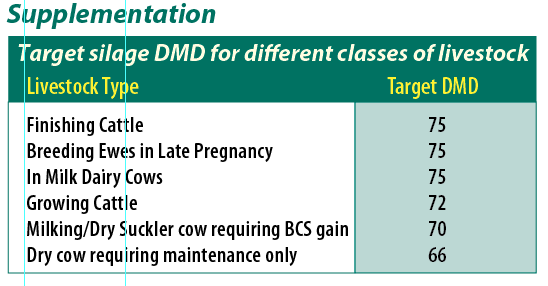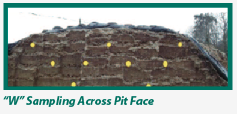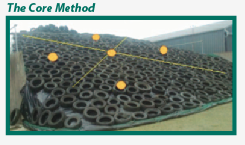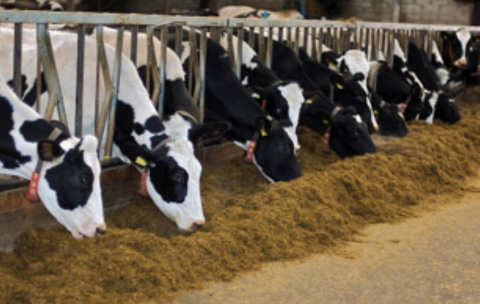A period of prolonged wet weather in the second half of May this year and early June, meant harvesting was delayed beyond the typical late-May window. A ten day delay in harvesting could reduce your DMD by 5 points.

Understanding Your Forage Analysis
Dry Matter
This is the portion of material that is left over after the water is removed. The energy and protein content of the feed is measured as a % of the dry matter. The higher the DM, the more concentrated the feed is, meaning the animal must eat less fresh weight to achieve the same total nutrient intake. Grass is usually cut at 16-17% dry matter and a common 24 hour wilt in 10ft rows will raise the DM by 6 points. Tedding out more than doubles the wilting capacity.
Dry Matter Digestibility (DMD)
This is a measure of the energy an animal can get from the silage. DMD also effects intake as stemmy material slows down the passage rate of feed through the animal. Very poor silage will only have 2/3 of the energy value of top quality silage.
Crude Protein
Highly correlated to the growth stage of the plant, with leafy grass having the highest protein. Grass with a high clover content, and or grass cut in the autumn will achieve the highest figures.
pH
A measure of the quality of preservation. pH is influenced by the dry matter and the sugar and nitrogen content of the grass ensiled. Very acidic silage (3.6 or below) will require careful supplementation.
Ammonia N %
High ammonia levels signals poor fermentation and is caused by high nitrogen levels and/or young leafy grass.

Where the target DMD is not achieved, extra supplementation is required. On the other hand, for example with dry cows, the silage quality may be too high and could have to be restricted at feed out.

Concentrate supplementation required for weanlings to gain 0.5kg and finishing steers to gain 1kg/live weight a day when fed varying quality silage.
Taking a representative silage sample
When taking a silage sample, it is important to ensure the material you collect is representative of the whole pit. When working with an open pit face, material should be collected in a “W pattern across the pit. Where the pit has not been opened, a long core sampler can be used to sample 3-5 well spaced on or between diagonals.


Ask in branch or contact your Technical Sales Representative to arrange a forage analysis. A silage core is available for use, where pits have not been opened yet.


